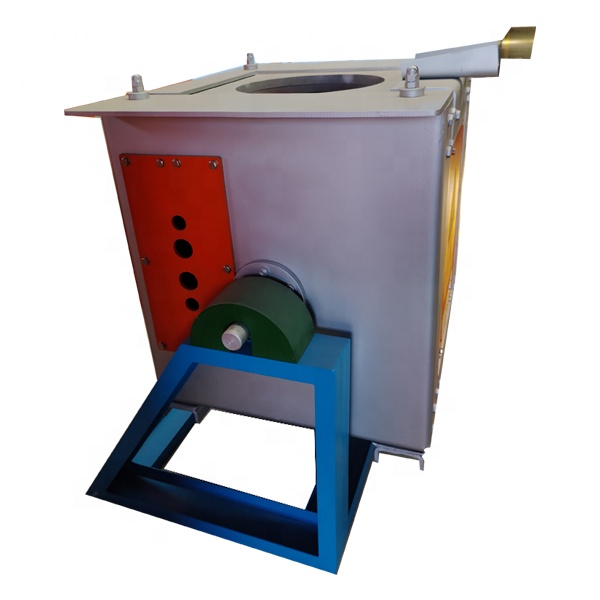Dust Removal Process for Medium Frequency Furnaces
Medium frequency furnaces are essential in the metal smelting and casting industries. However, they generate significant amounts of flue gas containing harmful substances, posing risks to both the environment and human health. To mitigate these impacts, an effective flue gas dust removal process is vital. This article explores the principles, equipment, and applications of this dust removal process while highlighting how our medium frequency furnaces can help you achieve optimal environmental compliance.
Principle of the Flue Gas Dust Removal Process
The flue gas dust removal process aims to eliminate pollutants such as particulate matter and harmful gases using physical, chemical, or electrochemical methods. Key dust removal principles include gravity sedimentation, inertial sedimentation, filtration, and electrostatic dust removal. Among these, electrostatic dust removal is particularly effective. Particles in the flue gas are charged by an electric field and deposited on collectors, ensuring a high level of purification. By investing in our medium frequency furnaces, you’ll benefit from advanced dust removal technologies that enhance your operational efficiency and environmental performance.
Equipment for Dust Removal
Effective dust removal relies on specialized equipment. One of the core components is the electrostatic dust collector, which includes a high-voltage power supply, collecting and discharge electrodes, and a collector. As flue gas passes through, particles become charged and are attracted to the collector, effectively purifying the gas. Our furnaces are designed to work seamlessly with high-quality electrostatic dust collectors, ensuring optimal performance.
Another crucial piece of equipment is the bag dust collector, which utilizes fiber bags as filter media to trap particles as flue gas flows through. Known for its high dust removal efficiency, this equipment is widely applicable across various industries. By choosing our medium frequency furnaces, you can streamline your dust collection process, leading to better compliance with environmental regulations.
Additionally, the wet dust collector plays a vital role by interacting with water to wash out particles from flue gas. This system is ideal for high-temperature and high-humidity scenarios, offering excellent dust removal efficiency with low energy consumption. Our furnaces can be integrated with effective wet dust collection systems, promoting sustainability in your operations.
Application of the Dust Removal Process
The medium frequency furnace smelting flue gas dust removal process is crucial across various sectors, particularly in metal smelting and casting. For instance, the steel smelting process generates substantial particulate matter and harmful gases. Implementing effective dust removal techniques not only purifies the flue gas but also significantly reduces environmental pollution. Our medium frequency furnaces are designed to support such applications, helping you maintain high standards of environmental protection in your operations.
Environmental Protection Requirements for Medium Frequency Furnaces
Medium frequency furnaces generate significant waste, including gases, water, and slag, which necessitates stringent environmental protection measures. Waste gas emissions, particularly flue gases containing CO, CO2, SO2, and NOx, require desulfurization, denitrification, and dust removal to minimize their environmental impact. Our furnaces come equipped with advanced emission control features to ensure compliance with regulatory standards.
During production, wastewater is often generated, containing harmful substances that can pose environmental risks. Proper treatment and recycling of this wastewater are essential to prevent contamination. By utilizing our medium frequency furnaces, you can implement efficient wastewater management strategies that protect the environment.
Additionally, the waste slag produced during operations must be classified, stored, and processed effectively to minimize environmental harm. Our systems facilitate better waste management practices, ensuring cleaner and more responsible operations.
Meeting Environmental Protection Requirements
To comply with environmental standards, several measures should be implemented. First, ensuring the safe operation of the equipment is crucial; monitoring parameters such as temperature and pressure can prevent issues. Our furnaces are designed with robust safety features, providing you with peace of mind.
It is also essential to use environmentally friendly materials that meet regulatory requirements, helping to reduce pollution. We can guide you in selecting the right materials that complement our furnace technologies.
Strengthening waste treatment methods is another important aspect. By enhancing treatments for waste gases, wastewater, and slag through advanced technologies, you can further optimize your processes. Our medium frequency furnaces can be integrated with cutting-edge waste treatment solutions, enhancing your operational efficiency.
Regular maintenance is key to ensuring optimal equipment performance. We offer support and services to keep your furnace operating at its best, helping you avoid potential disruptions and maintain compliance with environmental standards.
Welcome to Order from Us
The medium frequency furnace smelting flue gas dust removal process is crucial for environmental protection, enabling effective purification of harmful emissions. Through the use of advanced technologies like electrostatic precipitators, bag dust collectors, and wet dust collectors, industries can significantly reduce their ecological footprint.
We invite you to explore our medium frequency furnaces, which are designed to meet your production needs while ensuring compliance with environmental standards. Our expertise and commitment to quality will help you enhance your operations and contribute to a more sustainable future. Contact us today to place your order and take the next step toward improving your manufacturing process!




